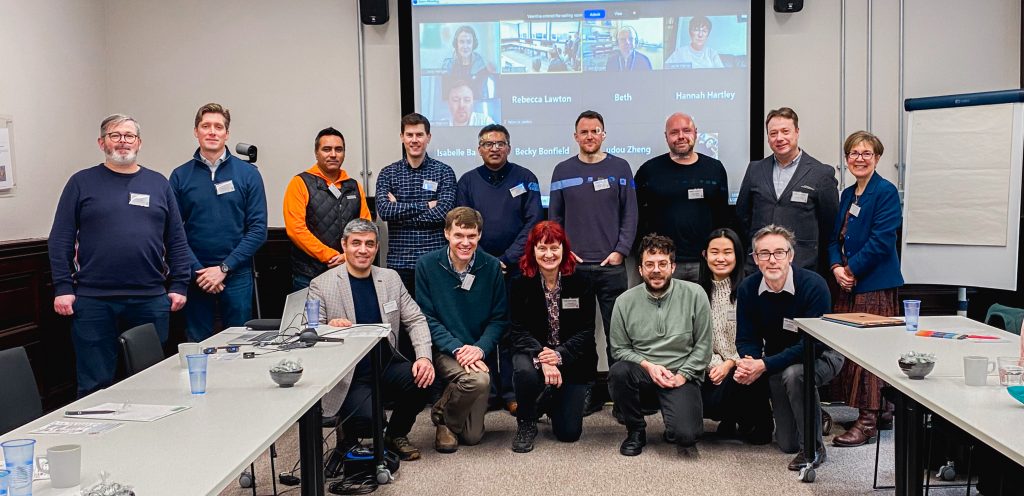
SafetyNet launches the NIHR PSRC Economics of Safety Network
By Alireza Mahboub-Ahari
The NIHR Greater Manchester Patient Safety Research Collaboration (GM PSRC) has hosted a SafetyNet event that brought together some of the brightest minds in patient safety research. On the 16th of January, Economics of Safety researchers gathered to launch a broad collaboration aimed at building a platform to unite researchers, providers, policy makers, and patient and public participants who are committed to finding sustainable patient safety solutions by embedding economics in patient safety research. The event was an inspiring launch pad for greater collaboration and innovation in patient safety research. As the world continues to face unprecedented challenges in health and social care, it is reassuring to know that people are coming together to find economic solutions to make a difference in the lives of patients worldwide.
The event was opened by Professor Rachel Elliott, the Lead of Manchester Centre for Health Economics, who extended a warm welcome to the attendees and articulated the vision for fostering a cohesive network among PSRCs. Prof. Elliott expressed, “We are here to establish a PSRC Safety Economics Network that will facilitate cross-collaboration and the exchange of ideas and research. This platform will also provide an invaluable opportunity for junior researchers and Ph.D. students to showcase their work and garner constructive feedback. We firmly believe that incorporating patient inputs, provider perspectives, and policymakers’ expectations will ensure economic studies are robust and relevant.”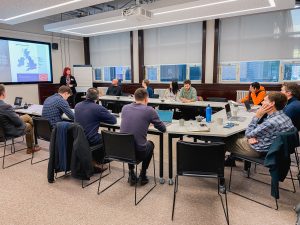
Rachel also introduced the Great Manchester PSRC research programme, outlining three interlinked themes that underscored how health economic research and innovation are part of the GM PSRC research initiatives. These encompassed the application of economics in medication safety, suicide and self-harm prevention, post-AKI collaborative care, and the evaluation of virtual wards implementation in Greater Manchester.
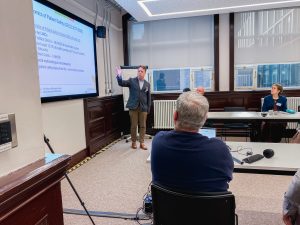 We were thrilled to have Professor Chris Bojke, Head of Academic Unit of Health Economics, from Yorkshire and Humber Patient Safety Research Collaboration (YH-PSRC), as our keynote speaker. His presentation focused on the economics of safety and how it contributes to safety in general, and specifically in healthcare. Chris provided an inspiring overview of the YH-PSRC’s experience in safety research, highlighting empirical studies that have quantified the impact of staffing strategies on patient safety measures across UK health centres. Attendees were engaged by his insights into the principles of economics of safety and the YH-PSRC’s research findings.
We were thrilled to have Professor Chris Bojke, Head of Academic Unit of Health Economics, from Yorkshire and Humber Patient Safety Research Collaboration (YH-PSRC), as our keynote speaker. His presentation focused on the economics of safety and how it contributes to safety in general, and specifically in healthcare. Chris provided an inspiring overview of the YH-PSRC’s experience in safety research, highlighting empirical studies that have quantified the impact of staffing strategies on patient safety measures across UK health centres. Attendees were engaged by his insights into the principles of economics of safety and the YH-PSRC’s research findings.
Chris said: “There are some areas in the economics of safety that require further development. The methods of analysis used in safety research seem to be underdeveloped, and we need to move beyond relying solely on observational data. It’s also crucial to incorporate attitudes towards risk and avoidable QALY loss in economic models and threshold values. Additionally, I think that local opportunity costs should be elaborated upon to provide more context-specific information”. Chris finished his lecture by asking a thought-provoking question about whether money or time is the correct metric to use in safety research.
Group discussion 1: Methodological considerations around economics of safety
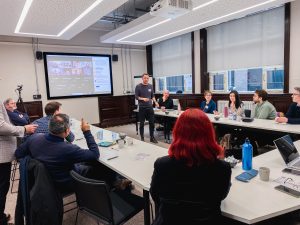 The first group discussion session covered Methodological Considerations around Economics of Safety, steered by Dr. Richard Mattock, Research Fellow in Health Economics at YH-PSRC. The conversation centred on the fundamental importance of patient safety, emphasising the need for patient awareness and a sense of security during healthcare experiences. Engaging in an insightful exploration, the group deliberated on the distinction between economics of safety and other domains, illuminating safety as a unique dimension of quality, centred on risk, while quality predominantly pertains to effectiveness. The complexities stemming from uncertainties, particularly in relation to psychological outcomes, were underscored, prompting considerations of employing the value of information framework to address such challenges. Additionally, the impact of safety assurance and the willingness to invest in ensuring safety was discussed. It concluded by identifying pivotal areas for future research, including mitigating uncertainty, identifying decision-makers in the realm of safety, and innovating evidence generation methodologies without traditional trials.
The first group discussion session covered Methodological Considerations around Economics of Safety, steered by Dr. Richard Mattock, Research Fellow in Health Economics at YH-PSRC. The conversation centred on the fundamental importance of patient safety, emphasising the need for patient awareness and a sense of security during healthcare experiences. Engaging in an insightful exploration, the group deliberated on the distinction between economics of safety and other domains, illuminating safety as a unique dimension of quality, centred on risk, while quality predominantly pertains to effectiveness. The complexities stemming from uncertainties, particularly in relation to psychological outcomes, were underscored, prompting considerations of employing the value of information framework to address such challenges. Additionally, the impact of safety assurance and the willingness to invest in ensuring safety was discussed. It concluded by identifying pivotal areas for future research, including mitigating uncertainty, identifying decision-makers in the realm of safety, and innovating evidence generation methodologies without traditional trials.
Group discussion session 2: How to optimise collaboration opportunities between PSRC economics of safety economists and how to engage non-economists
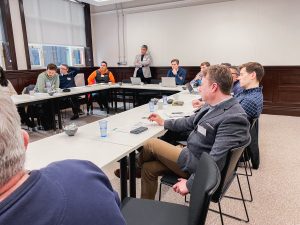 The second group discussion focused on optimising collaboration opportunities among PSRC economists and engaging non-economists, with Rachel Elliott moderating the session. The delegates actively exchanged insights, proposing various strategies to bolster collaboration, including establishing a Safety Net collaboration platform for the six PSRC groups, leveraging online networking platforms like WhatsApp and Teams, and formulating a Good Practice standard for economics of safety. Additionally, the group advocated for the dissemination of research outcomes through newsletters and websites, facilitating knowledge sharing and identifying areas of collaborative research. To engage non-economists, the group discussed making the economics of safety visible to non-economists through sharing research outcomes and pinpointing pivotal questions to enlist policy makers involvement. The group recommended identifying NIHR priority research questions to further engage policy makers in the economics of safety, ultimately highlighting the pivotal role of collaboration and engagement in advancing patient safety through the economics of safety.
The second group discussion focused on optimising collaboration opportunities among PSRC economists and engaging non-economists, with Rachel Elliott moderating the session. The delegates actively exchanged insights, proposing various strategies to bolster collaboration, including establishing a Safety Net collaboration platform for the six PSRC groups, leveraging online networking platforms like WhatsApp and Teams, and formulating a Good Practice standard for economics of safety. Additionally, the group advocated for the dissemination of research outcomes through newsletters and websites, facilitating knowledge sharing and identifying areas of collaborative research. To engage non-economists, the group discussed making the economics of safety visible to non-economists through sharing research outcomes and pinpointing pivotal questions to enlist policy makers involvement. The group recommended identifying NIHR priority research questions to further engage policy makers in the economics of safety, ultimately highlighting the pivotal role of collaboration and engagement in advancing patient safety through the economics of safety.
Group discussion session 3: Suggestions for building a sustainable network for health economics and patient safety research
 The final group discussion was led by Dr Gurdeep Sagoo, Senior Lecturer in Health Economics at the University of Newcastle and yielded insightful suggestions for building a sustainable network for health economics and patient safety research. The recommendations included fostering inclusivity among the six PSRC Health Economics centres, organising regular meetings throughout the year, considering the inclusion of a methodology discussion forums like journal clubs in future meetings, using existing PSRC channels for information dissemination, focusing on the next generation of researchers, and exploring the idea of creating rich media presentations to communicate the group’s work. These initiatives aim to enhance collaboration and knowledge sharing within the network.
The final group discussion was led by Dr Gurdeep Sagoo, Senior Lecturer in Health Economics at the University of Newcastle and yielded insightful suggestions for building a sustainable network for health economics and patient safety research. The recommendations included fostering inclusivity among the six PSRC Health Economics centres, organising regular meetings throughout the year, considering the inclusion of a methodology discussion forums like journal clubs in future meetings, using existing PSRC channels for information dissemination, focusing on the next generation of researchers, and exploring the idea of creating rich media presentations to communicate the group’s work. These initiatives aim to enhance collaboration and knowledge sharing within the network.
About SafetyNet
SafetyNet is the network of the six NIHR Patient Safety Research Collaborations (NIHR PSRCs). The PSRCs are funded by the National Institute for Health and Care Research (NIHR) to carry out research to improve patient safety across England, with a collective goal to address and reduce inequalities in health and social care. Click here to find out more.
As a network, SafetyNet’s goal is to exploit the potential for sharing knowledge, expertise and resources across the six PSRCs. This will maximise their ability to deliver highly relevant research that responds to the needs of patients and the health and care system and enhances the impact of patient safety research in England.
The six PSRCs are:
NIHR Central London PSRC
NIHR Greater Manchester PSRC
NIHR Midlands PSRC
NIHR Newcastle PSRC
NIHR North West London PSRC
NIHR Yorkshire & Humber PSRC
Each PSRC leads research that addresses one or more Strategic Patient Safety Challenges:
- Improving patient safety intelligence and understanding of patient safety challenges
- Improving organisational patient safety culture and practice
- Patient safety behaviours
- Effective patient safety practices
- The patient safety impacts of alternative service delivery models
- Ergonomics, design and human factors
- Clinical risk scores (validation, implementation and outcomes)
How to get involved in the SafetyNet community
- View the first SafetyNet Newsletter by clicking here
- Follow the NIHR PSRC Network on X/Twitter by clicking here
- Subscribe to SafetyNet quarterly newsletter and stay tuned for news and updates by filling out this quick form







0 Comments